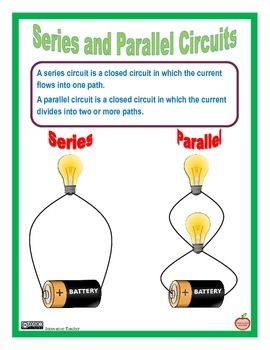How Parallel Circuits Work

Individual resistances diminish to equal a smaller total resistance rather than add to make the total.
How parallel circuits work. First though lets wrap our heads around a series circuit. Later we will outline this type of circuit. Don t worry a parallel circuit is still a viable option and used often. When two or more resistors are connected side by side the current can choose it s path in much the same way as cars tend to change lanes and drive alongside one another when a one lane road splits into two parallel lanes.
Electricity has work to do and when the electrons are flowing around a circuit that s current at work. There are two ways to hook together electrical components. That s the key difference between series and parallel. The two simplest of these are called series and parallel and occur frequently.
The total circuit current is equal to the sum of the individual branch currents. Learn about and revise how series and parallel circuits work and resistance in series and parallel circuits with gcse bitesize combined science. Components connected in series are connected along a single conductive path so the same current flows through all of the components but voltage is dropped lost across each of the resistances. Often referred to as daisy chained or looped the current in a series circuit follows one path from start to finish with the anode positive of the second led connected to the cathode negative of the first.
Components of an electrical circuit or electronic circuit can be connected in series parallel or series parallel. This lesson focuses on how this type of connection affects the relationship between resistance current and voltage drop values for individual resistors and the overall resistance current and voltage drop values for the entire circuit. In a parallel circuit each device is connected in a manner such that a single charge passing through the circuit will only pass through one of the resistors. After reading these steps you should be able to find the voltage current.
Parallel circuit in a parallel circuit there is more than one path for the current to follow. Before we dive into the difference between series and parallel circuits let s go over some basics terms that we ll be throwing around. Notice that in some nodes like between r 1 and r 2 the current is the same going in as at is coming out at other nodes specifically the three way junction between r 2 r 3 and r 4 the main blue current splits into two different ones. Series circuits use components connected one after the other while parallel circuits connect components along parallel branches.
Solving parallel circuits is an easy process once you know the basic formulas and principles. The way resistors are hooked up determines how they contribute to the total resistance of the circuit. Voltage is equal across all components in a parallel circuit. If it s a closed continuous path then electricity will flow on it.


















